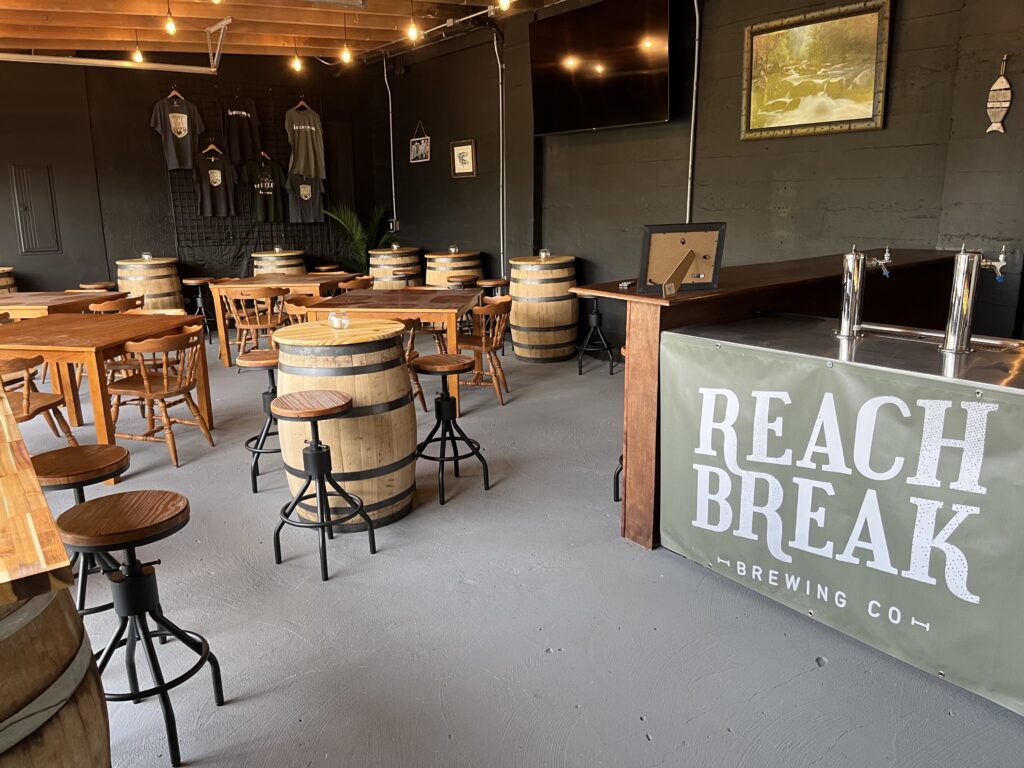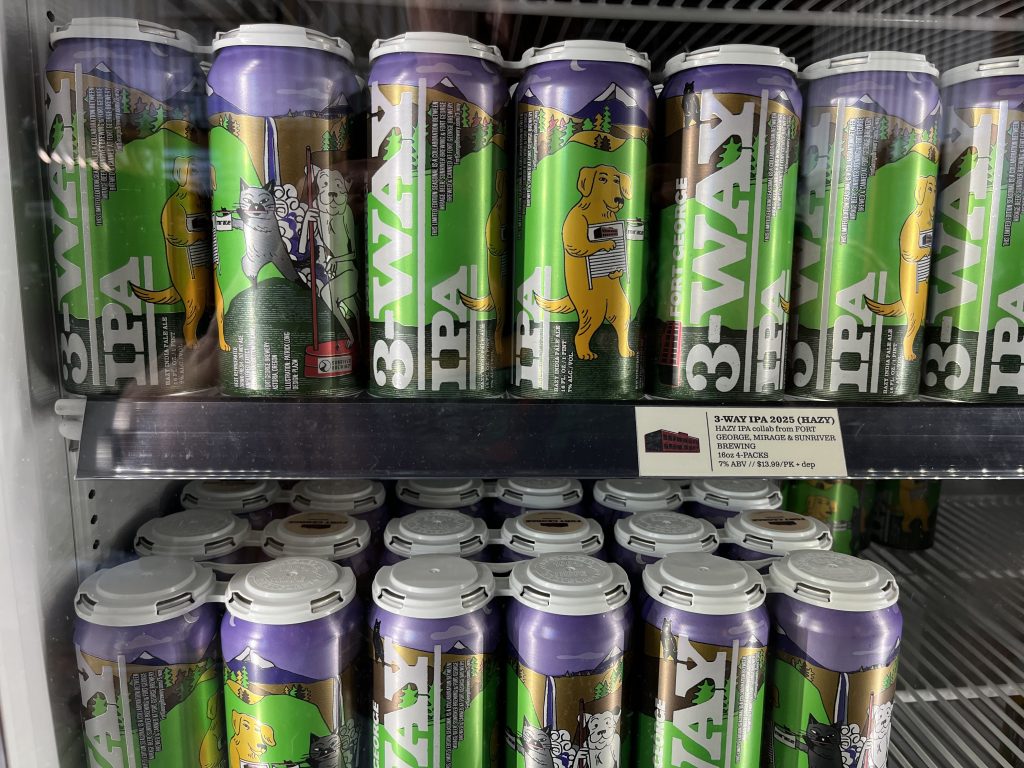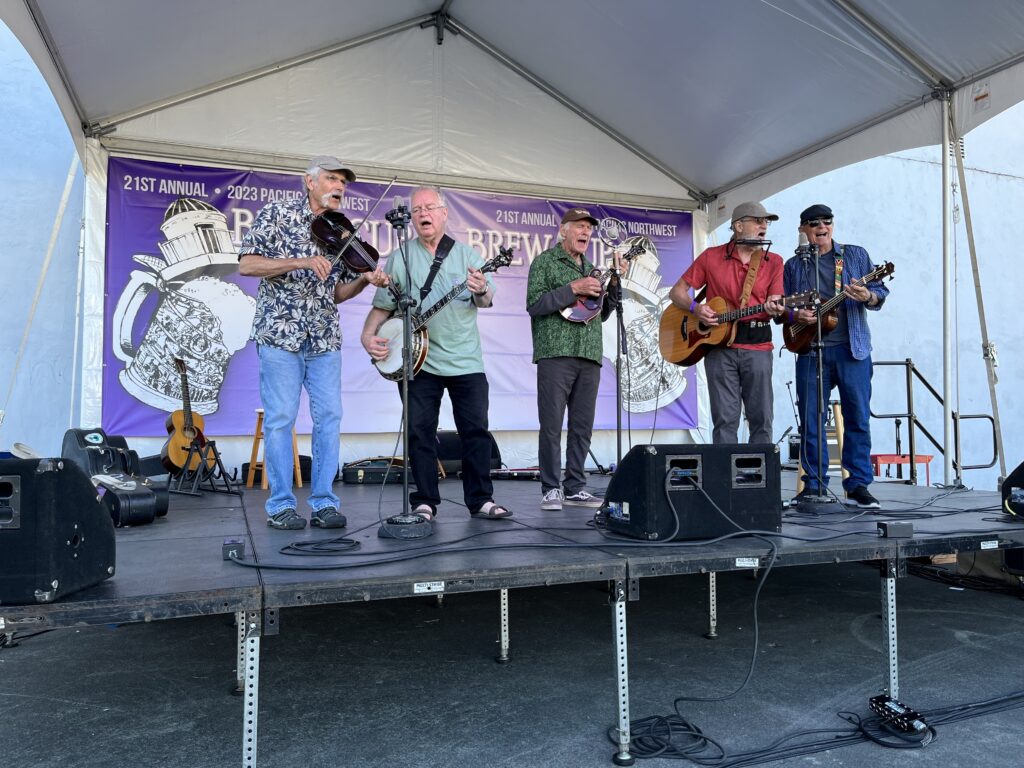BY WILLIAM DEAN
The owner of Astoria’s largest brewery is frustrated. So is the owner of what would be the city’s smallest brewery.
Chris Nemlowill’s Fort George Brewery produces some 32,000 barrels of beer a year, distributed throughout the Pacific Northwest. That’s nearly a million gallons.
Dan Salenski’s downtown craft soda and gluten-free beer business would create slightly more than a home brewer makes in his basement.
Despite the stark disparity in production, they share the same burden: Under city regulations that took effect in 2022, both must capture, pre-treat and test wastewater before releasing it into the sewer.
For Nemlowill, that’s meant spending large sums of money on a “sidestreaming” system that removes hard to treat solids, such as hops, yeast and grain. He’s also been trucking wastewater to farms, to be sprayed on fields where cattle graze.
For Salenski, it’s an even bigger impact, relatively speaking. Under the city requirements, he says he can’t afford to brew beer inside the old Sunflower Dairy building on Duane Street as planned. He’ll have to produce and package it on his rural property outside the city, then truck it in.
“I would like to brew downtown, create jobs downtown,” Salenski said. “I told them it would be a nanobrewery, and they said it didn’t matter.”
That’s the kind of story that makes Nemlowill cringe.

His love for Astoria, the town where he grew up and still calls home, is well-documented. He calls it the “City of Dreams.” He emblazons every can of beer with “Greetings from Astoria.” Despite the brewery’s constant growth since its founding 17 years ago, he has no desire to set up taps or fermenting tanks elsewhere.
Lately though, Nemlowill wonders if his love is unrequited. As he foots the bill for pretreatment, he questions why the city has been slow to make needed wastewater system improvements.
“We have three wastewater-treatment lagoons that have been there for 50 years and they’ve never been dredged. We have a very old system of aerating the ponds. There are improvements that are needed,” he said. “We need to go and dredge them out and add additional aeration, and we can probably break down four times as much stuff as they did when it was first built.”
The city’s requirements, meanwhile, have taken a toll. Fort George’s much smaller downtown neighbor, Reach Break Brewing, closed in January, citing higher operating costs and being newly designated “industrial” as a major factor.

The loss of Reach Break and the unrelated closure of Fortune & Glory Cider Co. at the same time took the steam out of what had been a thriving craft beer and cider industry in Astoria.
Nemlowill recognizes the impact of Fort George and Buoy Beer Co. wastewater on the city’s aging sewage system but argues that overdue improvements would greatly increase treatment capacity. “I believe the wastewater in our town should be dealt with at one location, because that’s how you do it most efficiently,” he said.
Salenski is looking at having to install a $100,000 sidestreaming system on top of his extensive building remodeling costs. Even if he only makes soda on the premises, the city is requiring collection and testing.
“The quantity of the wastewater you’re producing should be a consideration and it’s not. It’s not a fair thing, in my opinion,” he said.
City Manager Scott Spence said he “fully recognizes the value” of the breweries and pledges to work with them moving forward to help ensure their survival and growth.
City officials have defended the wastewater requirements as necessary to meet federal standards, protect the Columbia River and prevent the sewage system from being overloaded prematurely.
Spence said work on a $7 million system upgrade that includes dredging and added aeration is slated to start around summer 2025. While those improvements are intended to extend the life of the system until 2048, he said it’s unlikely that breweries will see their pretreatment burden ease.
“That doesn’t mean we’re not open to additional ways to assist the fermentation sector and that we can work more collaboratively. I just don’t know what that is yet,” Spence said.
Nemlowill calls the city’s tough rules “short-sighted,” given the importance of the fermentation industry locally.
“I believe our city should really embrace the breweries and the fermentation sector and see what the sector has done for our town,” he said. “There’s over 700 people who work in the craft beer industry in Clatsop County. The fermentation sector brings over $21 million a year to the county in hotel stays, restaurants. … We bring so much to the county and town.
“It’s a major part of the renaissance of downtown,” he added. “Why would you want to do anything to deter these cool businesses?”
__
WILLIAM DEAN is an author of suspense novels with a passion for craft beer. Check out his blog at astoriabeerzone.com.




